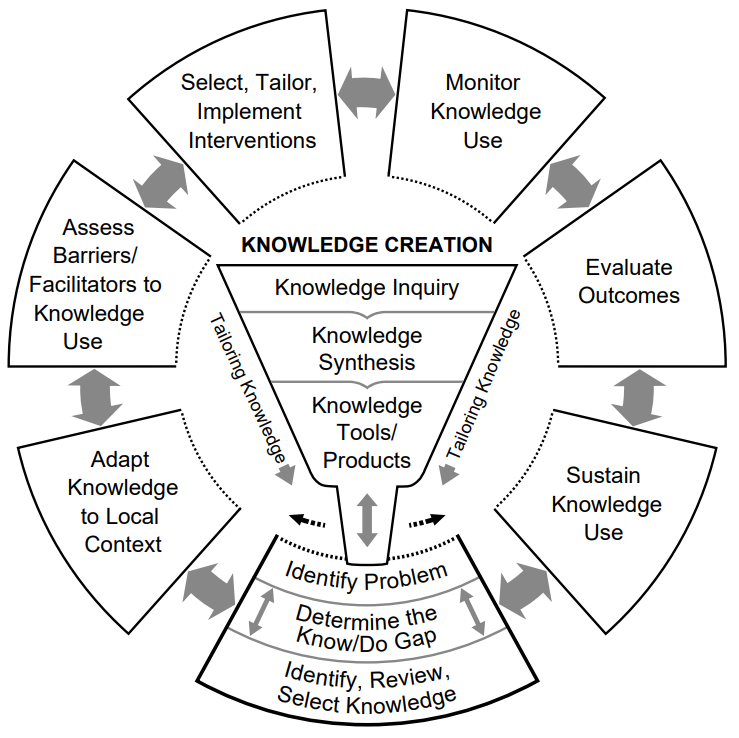10 Introduction to Knowledge Management and Communications | Models and Frameworks 2
‘Knowledge to Action’ Framework
In 2006, Ian Graham and colleagues proposed a new model to illustrate the process of knowledge mobilization6. This model is meant to capture the process of knowledge creation, as well as the movement of this knowledge into use and all associated tasks to evaluate and sustain this use.

Knowledge creation
The process of knowledge creation comprises three elements: knowledge inquiry, synthesis, and creation of knowledge tools or products.
Knowledge inquiry consists of primary research and associated publications.
Knowledge synthesis includes the aggregation and evaluation of research; for example, systematic reviews and meta-analysis.
Knowledge tools and products are many of the products that are created to share results with end users.
Action cycle
- The action cycle is meant to represent the activities required for the knowledge produced in the knowledge creation funnel to be effectively used for decision-making. It includes the following activities:
- Assessment of an issue, problem or gap which requires application of knowledge
- Identification, review and selection of the appropriate knowledge to address this problem
- Tailoring and adaptation of this knowledge to the local context and the relevant audience
- Identification of barriers that could make uptake and use of this knowledge more difficult (individual, organization and systematic barriers) and supports that could facilitate uptake and use of knowledge
- Selection and tailoring of interventions; this includes the choice and creation of dissemination mechanisms and should be informed by the assessment of the problem, local context and barriers and facilitators to knowledge use.
- Monitoring of knowledge use; this includes assessment of the initial outcomes of the knowledge mobilization activity, including potential changes in knowledge, attitudes, behaviour and decisions that may result; as a result of this monitoring, the intervention or activity can be adapted for best effect.
- Evaluation of impact assesses the resulting changes from knowledge use; that is, are the desired changes or benefits happening?
- Finally, the knowledge use can be sustained, which can be maintained through a cycle of evaluating barriers, uptake and outcomes, and adapting as necessary to ensure continued use of the research.
The Knowledge to Action Cycle is one of the formative models in the field, and serves as a useful model to understand the many elements involved in creating knowledge, adapting it for specific audiences, and implementing and evaluating activities to share this knowledge with end users.

